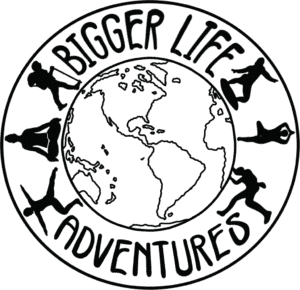Yoga for freedom and liberation – from suffering, from addiction, from our false sense of separation
What is yoga?
Yoga is a practice we use to find freedom and liberation. Do you ever feel trapped in your mind? Alone, stuck, addicted, separated, or like your brain is constantly repeating patterns of suffering? The first line of Patanjali’s Yoga Sutras translates to “Yoga is the cessation of the fluctuations of the mind.” So really, that’s the whole point of the yoga practice. Take a moment to let that sink in. It’s not to do a perfect handstand or take a cool photo in a backbend on a cliffside. It’s not about the aesthetics at all! We love to label things into categories like, “trauma-informed yoga,” “Ashtanga yoga”, “vinyasa yoga”, “restorative yoga” etc. We love to over-complicate the yoga world with yoga pant styles, celebrity yoga teachers, the desire to get our favorite spot in a yoga studio, and a million choices of yoga retreat destinations. But, “yoga is the stopping of mental turbulence.” That’s it. I encourage you to pause, take a few deep breaths, and try to internalize that simple definition.
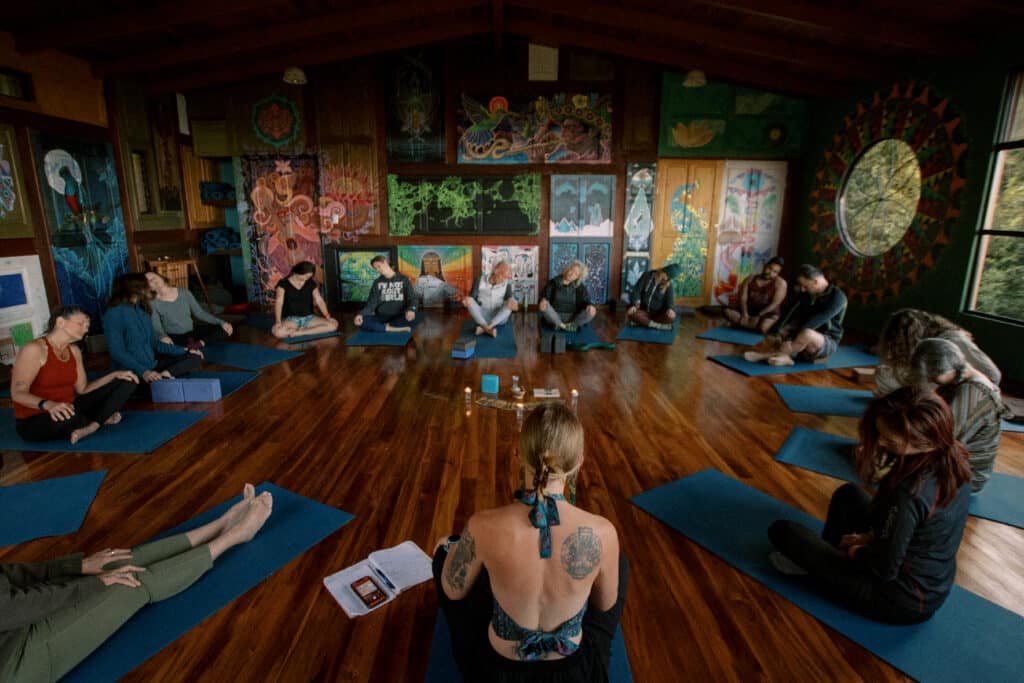
Carrie guiding an all-levels yoga practice on retreat in Costa Rica!
What does “yoga is the stopping of mental turbulence” mean to you? How does yoga help you find freedom from your mind’s thoughts and limited perception of reality?
In Sanskrit that direct and no-nonsense first line goes “Yogash chitta vritii nirodha.” And somewhere in the 4th Yoga Sutra Patanjali defines yoga again as “liberation practices,” or “moksha shastra.” I even love the sound and feeling of pronouncing those two Sanskrit words, “moksha shastra.” It even sounds powerful. So, yoga has this power to FREE us, to liberate us!
But what does yoga free us from?
When the repetitive stories, stresses, and thoughts that run through our minds nearly constantly finally stop or pause for a moment, we are free, liberated to experience the fullness of being alive in the present moment. How good does it feel when you experience those brief glimpses, those moments of freedom and flow? When everything else drops away and you are, for-once, fully present? For me, it feels ecstatic, it feels transcendent, it feels liberating. It feels opposite from the state of mental distraction and separation from my body I spend a lot of my time in. But, I would love to feel present, unified, connected all the time. And that is why I continue to practice yoga, not just in a studio on a mat, but I engage in effort to practice yoga in every moment that I can.
Freedom from mental turbulence (and eventually enlightenment) is the goal and the aim of yoga, especially trauma-informed yoga. Just like freedom from suffering is the goal of the similar Buddhist path. In a moment of complete presence, existing fully in the NOW, my mind doesn’t run away to a time separate from the moment my body exists in. My mind and body fully unite in a way that feels right, purposeful, and life-giving. These moments don’t only come in a yoga class in a yoga studio, or when I’m meditating. They come when I am living my life in a compassionate, mindful, generous way.
This is why we do our practice, whether that’s asana (physical practice), meditation, or pranayama (breathwork), or a combination, in order to experience those moments of freedom and true connection. We follow the Yamas and Niyamas, the ethical guidelines from yoga philosophy, to the best of our ability. We strive to stay present and aware of how our actions effect others and this world. We try to live in unity within ourselves, and ripple that unity outwards to live in right relationship to the rest of the world.
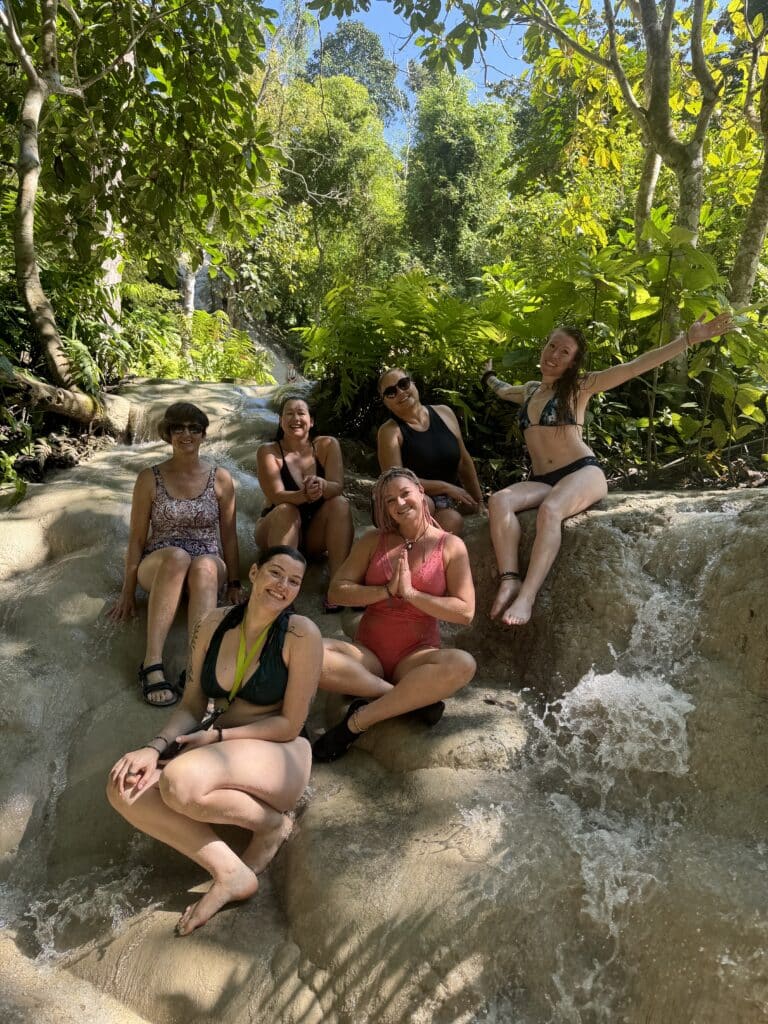
Yogis feeling freedom in nature on our Thailand retreat
What is true freedom according to yoga?
So, since yoga teaches us that oneness and presence are true freedom, then why has “freedom” in the United States become synonymous with individuality, self-serving behavior, and personal independence? The fourth Yoga Sutra actually warns us about this misinterpretation of freedom. Mukunda Stiles translates Sutra IV:4 as, “Solely from the sense of individuality are mental fabrications produced.” [emphasis added] Mukunda Stiles translates Sutras IV:24-26 as: “The mind accumulates countless desires, although it exists solely for the sake of being close to the True Self. Dwelling upon self-centeredness completely ceases for one who sees this distinction. Then the mind is inclined toward discriminative thinking, which pulls irresistibly toward absolute freedom.”
These Yoga Sutras are clearly telling us that the illusions of separateness from one another and individuality are producing these “mental fabrications” that keep us imprisoned upstairs in our crazy brains. In your average human brain, over 90% of each day’s thoughts are repetitive, unoriginal thoughts that you have had before or will have again! That’s a lot of over-thinking and over-analyzing! I believe we’ve almost over-evolved to have these large, overactive brains that find it very difficult to pause or turn off for a break! I also think that living in balance means accepting that yes, in this human experience we feel individual and unique and must sometimes make choices for ourselves only. However, the trap is leaning into that illusion of separateness and acting for yourself only, rather than living and acting as a part of broad human, ecological, and spiritual community. “Lokah samasta sukhino bhavantu,” is one of my favorite Sanskirt mantras. “May all beings be happy and free.” Not just me. Not just my family. Not just the people who agree with me. ALL. BEINGS.
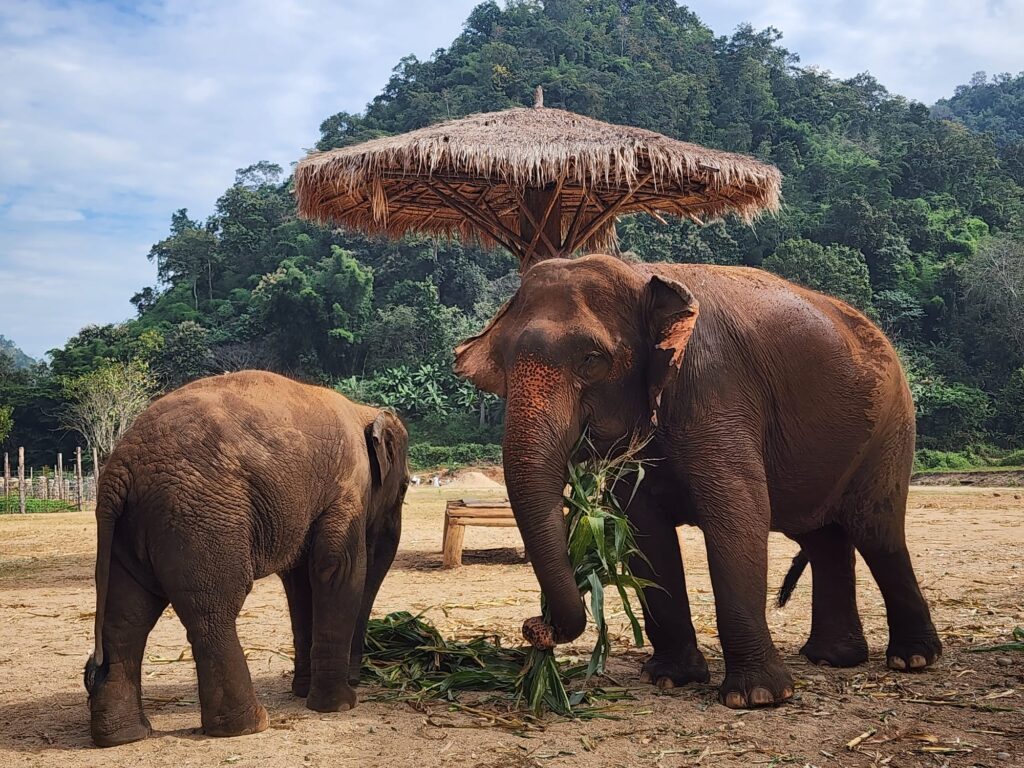
Visiting an elephant rescue sanctuary on our Thailand retreat. Yoga is a practice of creating freedom and contentment for ALL BEINGS.
What’s preventing you from being as free as you can be?
So, part of true freedom is understanding and recognizing our mental tendency towards feeling separate, but actively practicing and striving to come back into union. I’m not sure if we even will get to experience the bliss of ultimate freedom in this life, in this human form. I believe we might get to experience it in little glimpses, little moments of tranquility when we transcend that false feeling of separateness which is so hard to break out of. According to yoga philosophy, ultimate freedom won’t come until we transcend the karmic cycle of death and rebirth. That’s not something that’s easy to do, but we still must continue trying, in order to give our lives true purpose (“dharma“) and meaning.
To be truly free, we must question what chains us, what holds us back, and what leaves us in the false feeling of being separate from each other. Then we must strive to break those chains, pull the veil back on the illusion of separation, and live MORE of our moments in true unity and connection. We cannot always liberate ourselves from every literal or metaphorical prison in this reality, but we must find the keys to the prisons we have the capability to unlock.
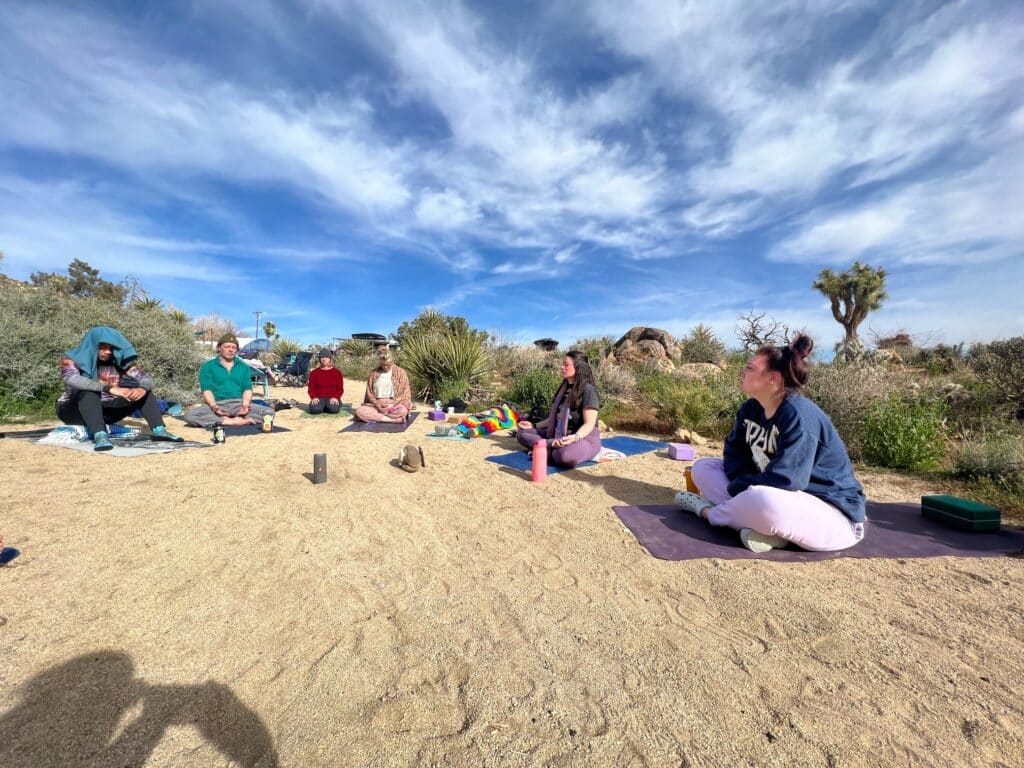
Outdoor yoga practice on our Joshua Tree yoga & climbing campout.
Is yoga good for addiction recovery?
Are you imprisoned by addiction? I was, for many years. When I started attending yoga classes before even considering getting sober, I started to get to know myself on a deeper level than I ever had before. It wasn’t always easy, but I began learning that I was capable of so much more than I had realized. Yoga helped me realize that I did have power and choices. Are you imprisoned by PTSD or symptoms of trauma? Trauma-informed yoga strives to create a safe space for all of us to heal. Are you stuck in repetitive, separation-based, destructive patterns? Studying the yoga path teaches us to question and refine our practices and behaviors and gives us new healing coping mechanisms to settle our nervous systems, calm our minds, and experience freedom.
In order to reject separation and experience oneness, it only makes sense that we should live in the world with an aim of allowing everyone to experience this same liberation. We know that the study and teaching of yoga is our dharmic path, the one we are meant to be on. So we will continue doing our small part to help others find freedom through the path of yoga. We’ll always offer Recovery Scholarships for each of our retreats so that the life-changing retreat experience is accessible to a wider range of income levels. I will continue teaching and managing a trauma-informed yoga program in our local Juvenile Detention Center, and seeking out other opportunities, paid or volunteer, to bring yoga to under-served populations.
“If you have come here to help me, you are wasting your time. But if you have come because your liberation is bound up with mine, then let us work together.” –Dr. Lilla Watson, indigenous Australian activist.
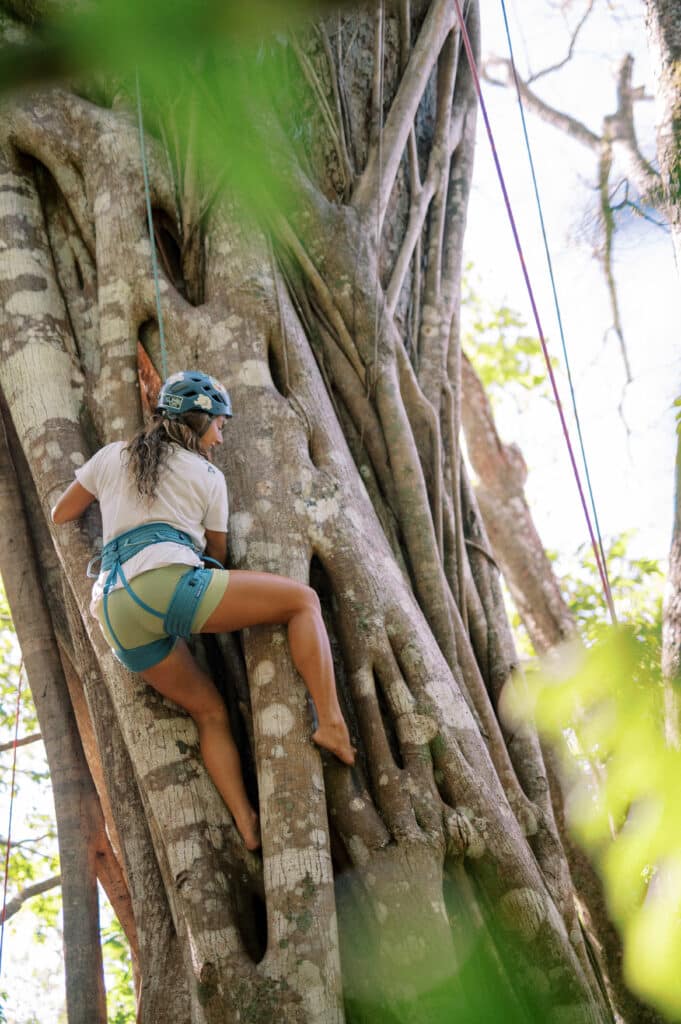
Finding freedom climbing strangler fig trees in Costa Rica’s cloud forest!
